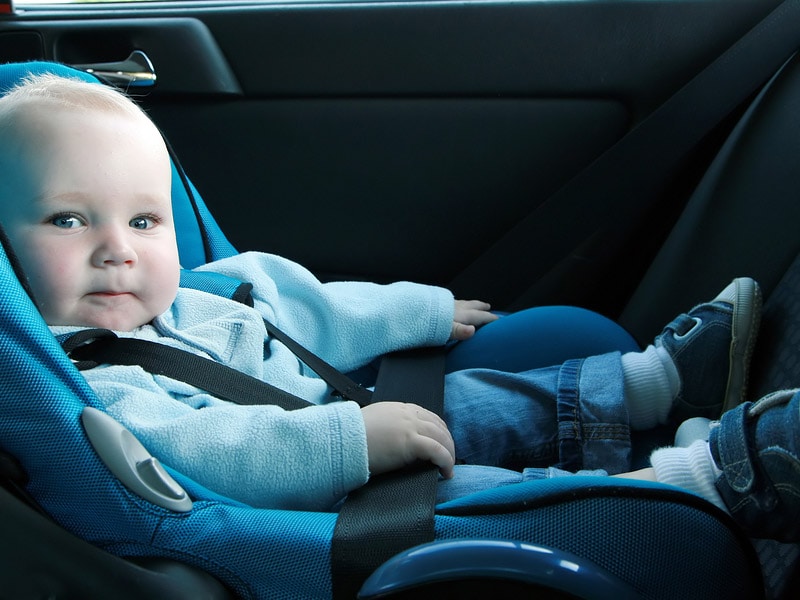Recent Articles
Popular Makes
Body Types
How and Why Rear-Facing Kids Until Age 4 Works Fine
Keeping the car seat rear-facing for longer isn't as much of a pain as you think.
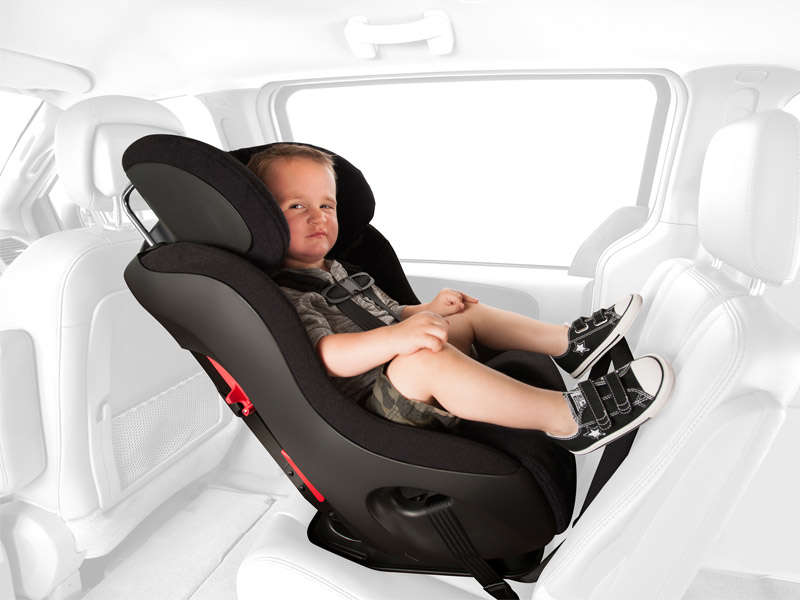
child in car seat
As I explained in “10 Car Seat Mistakes You Didn’t Know You Were Making”, the American Academy of Pediatrics now recommends that children remain rear-facing (or RF) until age 2 at the absolute minimum. This recommendation is regardless of height or weight, meaning even if your one-year-old is the size of a three-year-old, they should still be RF for another year. For children under 2, RF is 500% safer than forward-facing.
After age 2, the AAP—and other groups that advocate child passenger safety—recommends that they remain RF until age four or until they outgrow the rear-facing height or weight limits of their seat.
Here I will address some common questions and concerns that parents have about extended rear-facing (ERF). You may be surprised to learn how easy it is to keep your child safer for longer!
Q: Where will the kid’s legs go if they’re facing the back of the seat?
A: Wherever the kid feels comfy putting them. I’ve seen kids sit cross-legged (as shown on the Clek Fllo above), or with their feet flat against the back seat, or even with their legs flopped out over the side. Most kids (and adults) prefer to sit with their feet supported by something anyway, rather than having them dangling down. In fact, many children prefer to RF for this reason. It’s like kicking back in a recliner with your feet up.
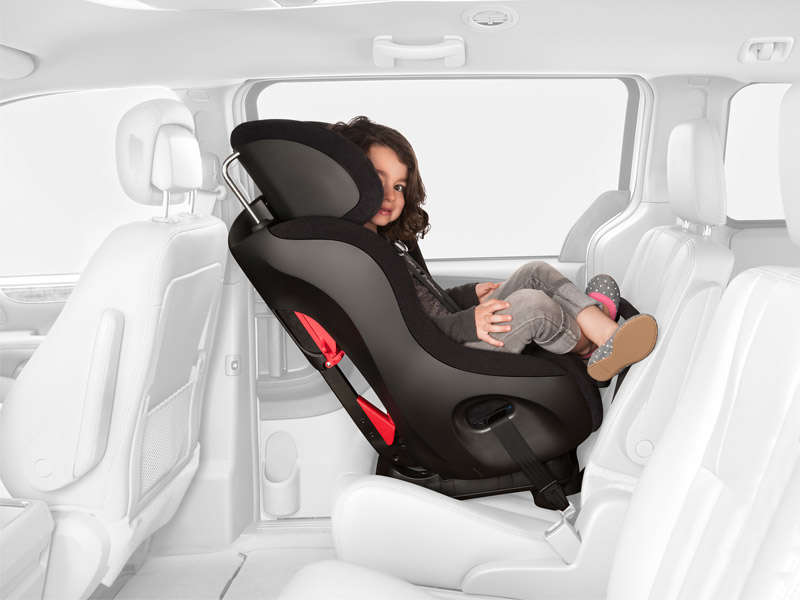
Q: Won’t their legs break in a crash if they’re up against the seat?
A: There is no evidence that children’s legs are more likely to be injured in a crash riding rear-facing than forward-facing. Even if there were—which, again, there is not—I would rather my child have a broken leg than a broken neck.
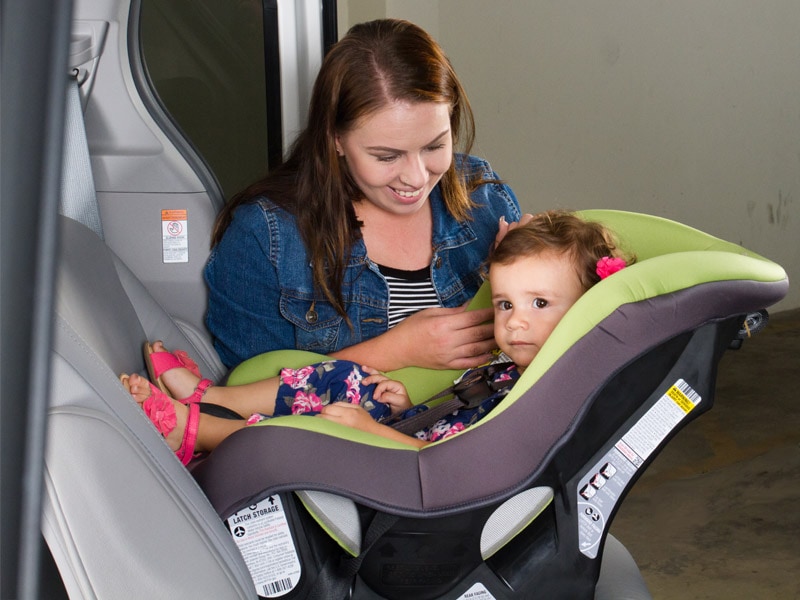
Photo by Chris Chavira
Q: Aren’t they going to get bored if they can’t see out the window?
A: In most cars, a child in a RF car seat can still see just fine out the side and back windows. There’s really no need for them to be able to see out the front windshield, given that they’re not driving or navigating. Furthermore, even if seeing out the front would be more interesting, kids that have only ridden RF aren’t going to know the difference anyway.
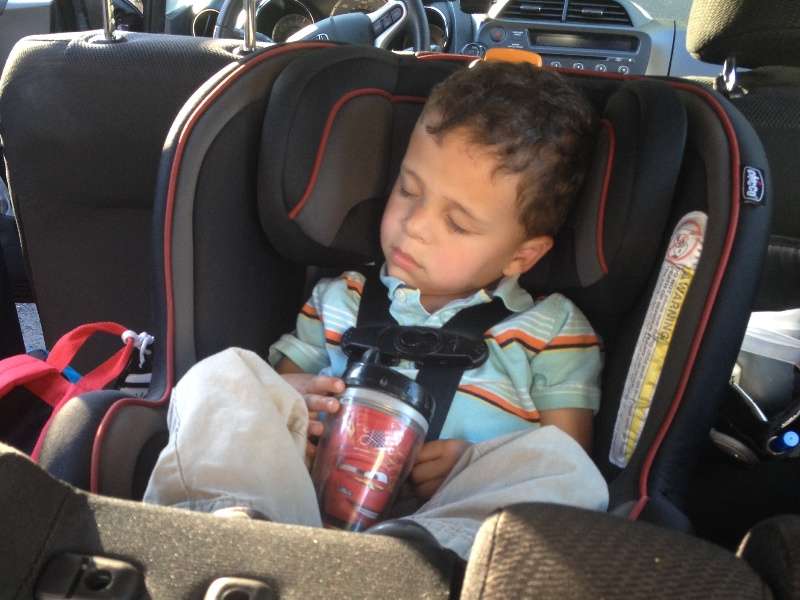
Q: I can’t spend another $300 to get some huge, fancy seat that will allow my child to RF longer. Am I out of luck?
A: Not at all. There are seats for under $100 that allow children to RF to 40 inches or 40 pounds, whichever comes first. To put that in perspective, 40” and 40 pounds is about average for a four-year-old boy. Two popular choices are the Evenflo SureRide and the Safety 1st Guide 65 (pictured above). Remember that more expensive does not equal safer. All child safety restraints pass the same pass/fail crash tests.

Q: My child doesn’t like to RF and complains about it. He wants to face forward. Shouldn’t I let him?
A: For children over 2, this is a parent’s choice to make. Keep in mind, though, that kids have parents for a reason: to protect them. My two-year-old cries when I don’t let him run out into a busy street, play with sharp knives, or ride his toy truck down the stairs; that doesn’t mean I let him do it. You need to make the decision that is in your child’s best interest, and they won’t always like it.
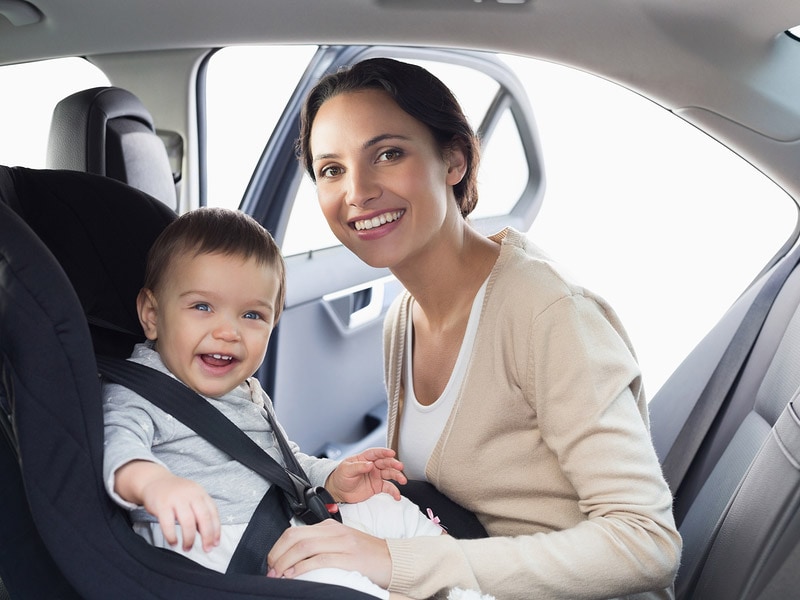
Q: If a child is big for his age, isn’t it fine to forward-face them earlier?
A: If the child is under 2, the answer is absolutely not. This is due to their spinal development—their necks are not strong enough to withstand the initial impact of a crash unsupported. In a crash, it can lead to something truly horrible known as internal decapitation. For a moving (but possibly upsetting) story of an 18-month-old boy who barely survived a severe crash in a forward facing seat, visit Joel’s Journey.
After age 2, RF is still safer, but the risks to the child’s neck and spine are less extreme. If they have outgrown their seat in RF mode by then, it is acceptable, although not ideal, to turn them forward.
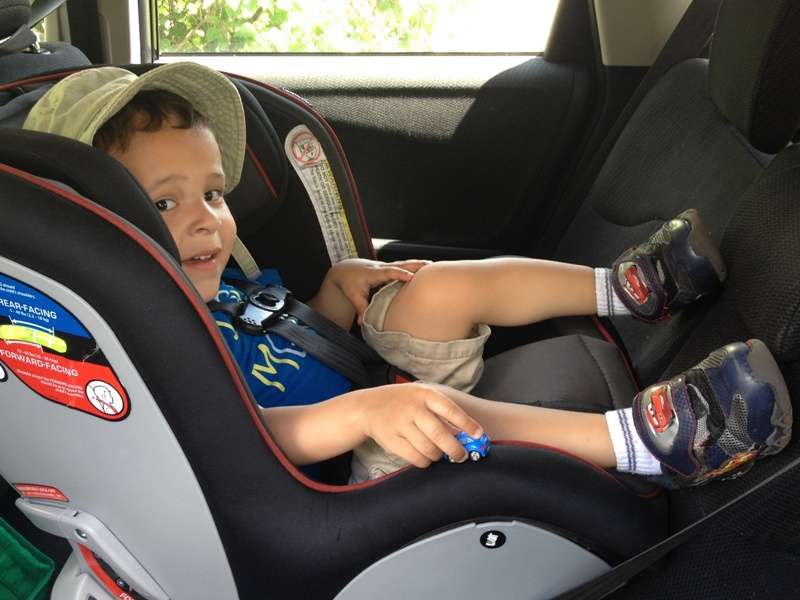
Q: My older children were turned forward at one year old and I never rode in a car seat at all. We’re all fine, so is it really a big deal?
A: Yes, it is a big deal. It’s true that most people who are unrestrained in a car arrive safely at their destinations. Seat belts and car seats are intended to keep you safe in the event of a crash. I have survived to the ripe old age of 31 and while I always wear my seat belt, I would still be alive and uninjured even if I didn’t, because I have never been in a car accident. You were never in a car seat as a kid and you’re fine. Great. But were you ever in a serious crash while unrestrained? Probably not. And if you were, you wouldn’t be alive to tell people about it.
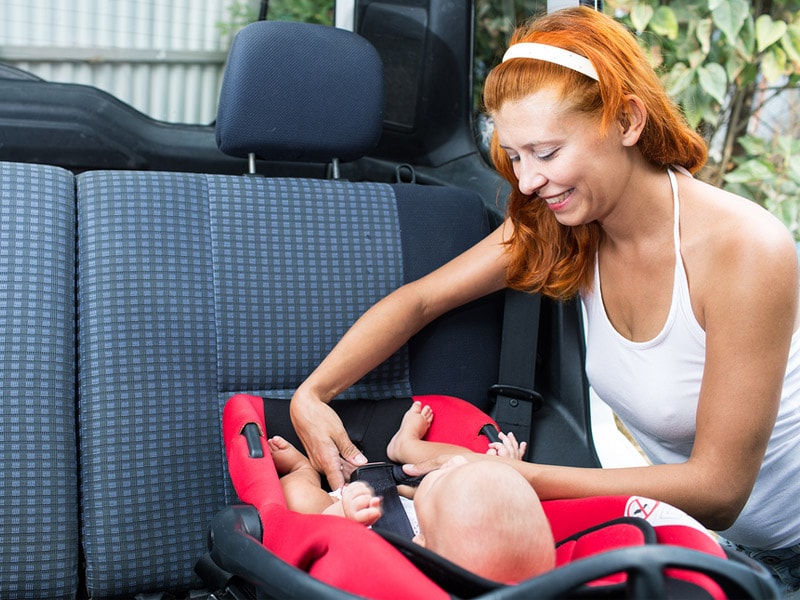
Q: The law says they have to RF until age 1 or 20 pounds, so isn’t that good enough?
A: In short, no. Laws should never be the deciding factor when it comes to safety. If it were legal to leave your two-year-old home alone, would you do it? I hope not. How about if it were legal to allow your ten-year-old to drink beer?
U.S. car safety laws are often a decade or more behind what is now known to be best practice. It’s true that you need to follow them to avoid getting a ticket, but just because something is legal doesn’t mean it is right or safe.
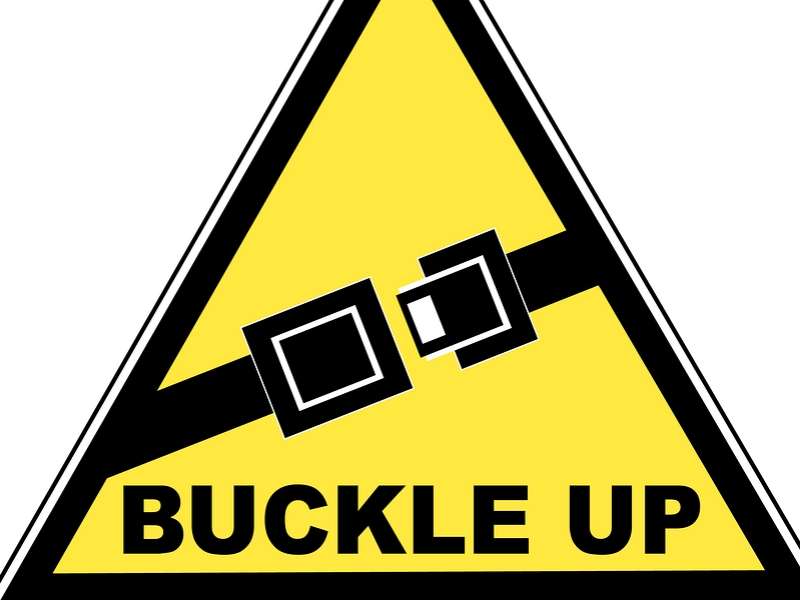
Q: Isn’t it safer if I can see my child while driving?
A: This is a tough one. I completely understand wanting to be able to glance in the rear-view mirror every now and then and make sure your child is still asleep/smiling/breathing. Child Passenger Safety Technicians (CPSTs) are taught to advise parents against using the mirrors that attach to the backseat and allow you to see the baby when they are RF. There is the risk that they will detach in a crash and injure the child or other passengers.
Personally, I have used a soft, cushioned mirror, VERY securely attached to the headrest, since my son was two months old, and I know CPSTs who have done the same. As a nervous new mom, I found being unable to see him while driving to be extremely anxiety-provoking. In my personal opinion (and there are many experts and non-experts who will disagree), if the only way you will be comfortable rear-facing your child past age one or two is to use a mirror so you can see them, it’s better to use the mirror than to turn them forward-facing.
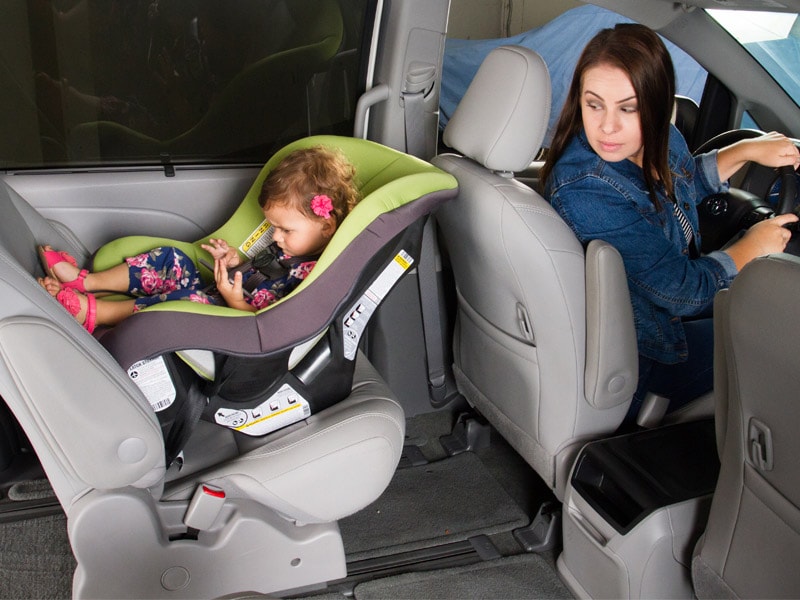
Photo by Chris Chavira
How and Why Rear-Facing Kids Until Age 4 Works Fine
Q: I went car seat shopping, and there are plenty of forward-facing-only seats that say they are for over one year and over 20 pounds. What’s wrong with those?
A: Technically, such seats might keep your child safe in a crash once they are one year old. The thing is, companies want you to buy their products. They’re going to state the bare minimum limits that they can, in order to have a wider range of potential buyers. In reality, these seats are designed to be long-lasting and accommodate kids up to five or six years old. They’re just not appropriate for a baby or young toddler.
